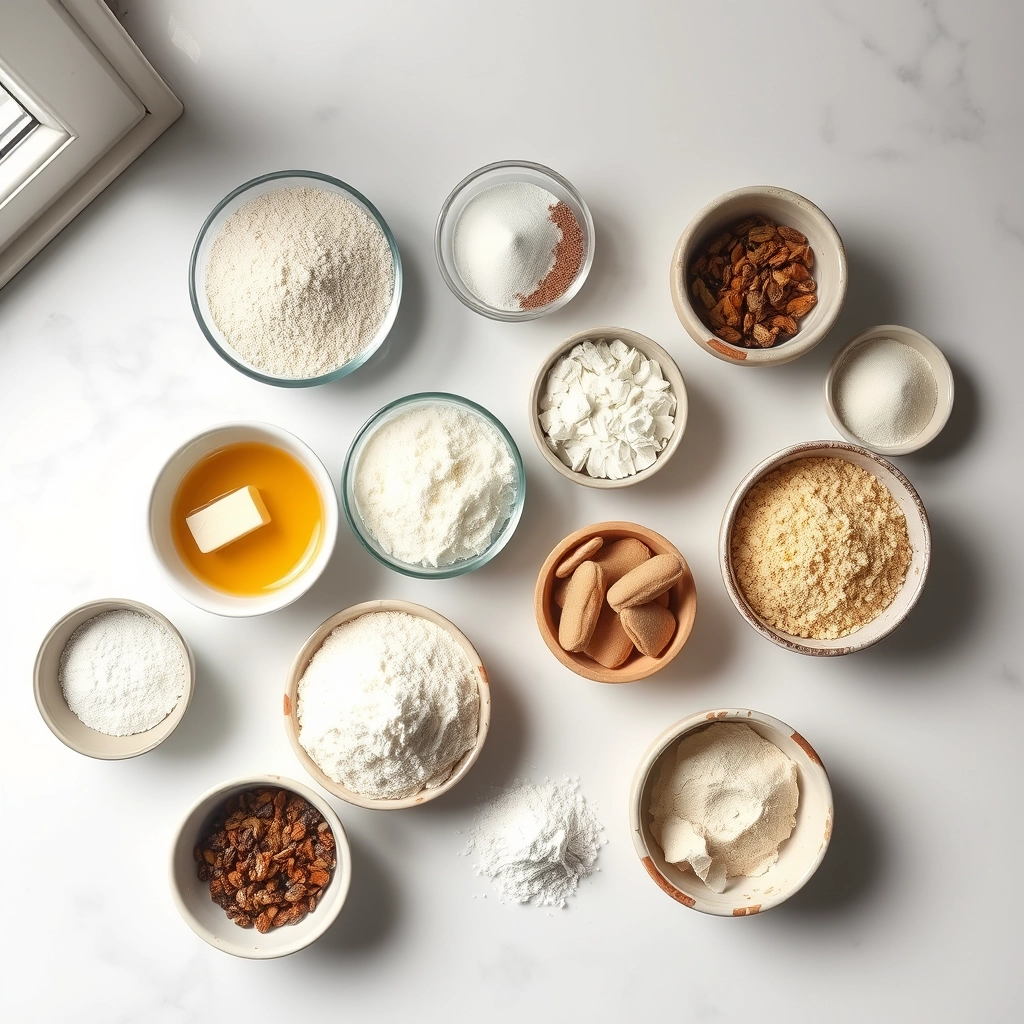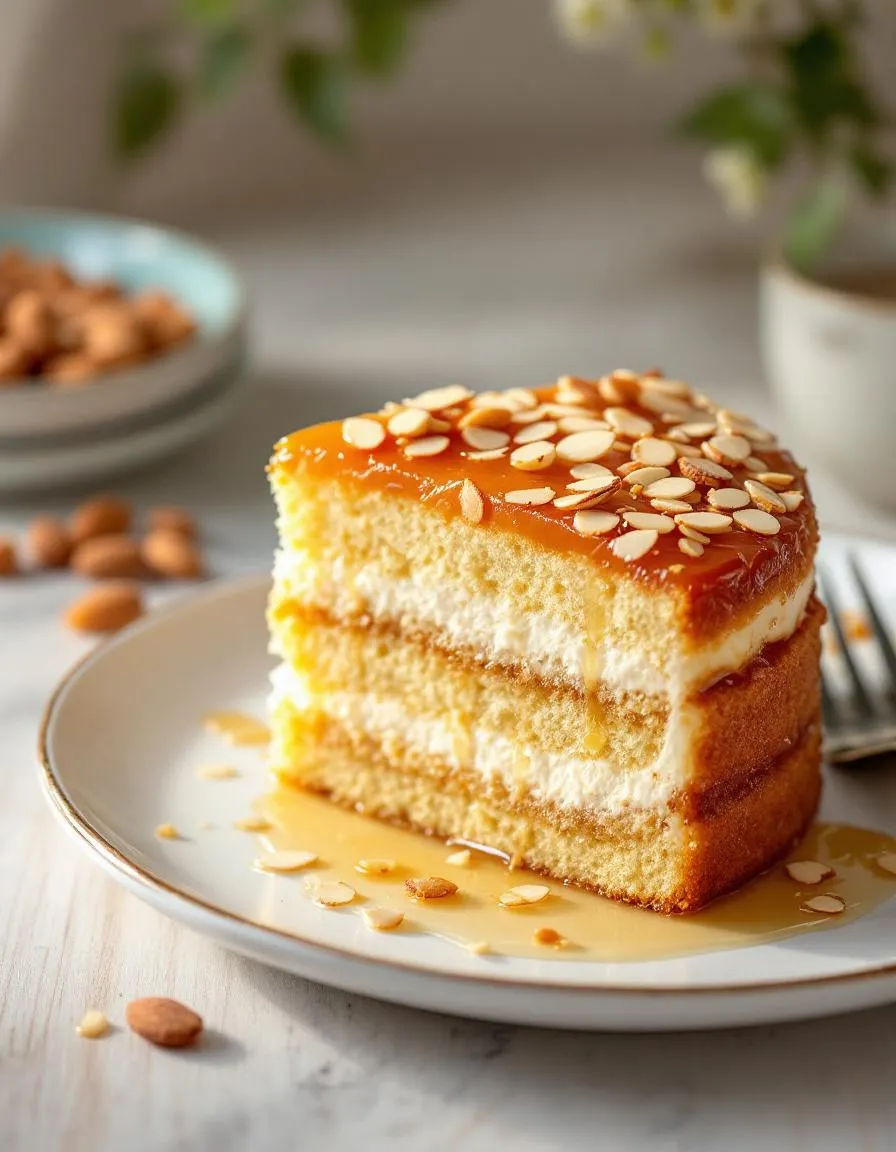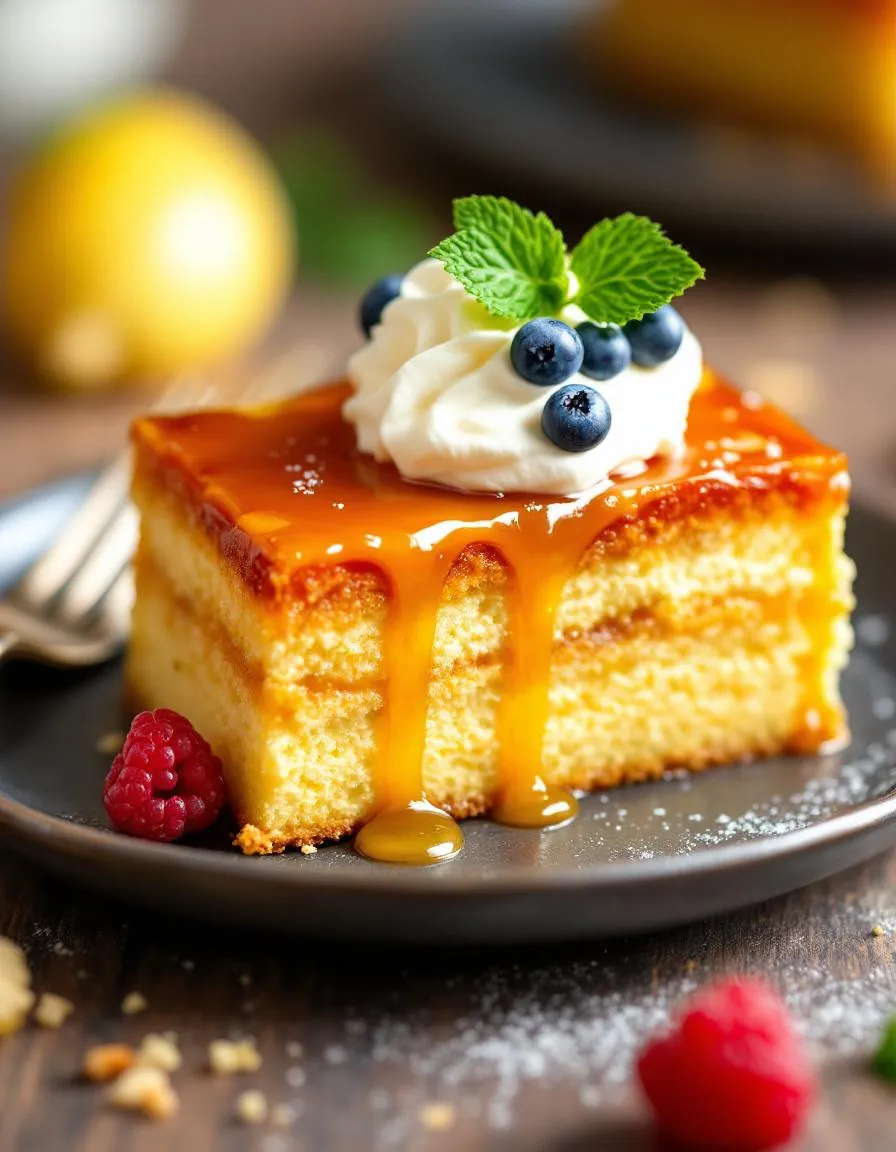Introduction
Hi there! I’m Emily, the heart and soul behind brekcakes.com. From my earliest memories, the kitchen has always been a place of warmth and creativity. It’s where I discovered the magic of turning simple ingredients into extraordinary meals and learned that the best dishes are often made with love as the main ingredient.
There’s something truly special about baking a cake that carries history and nostalgia in every bite. If you’ve ever craved a dessert that balances rich flavors with delicate textures, you’ll adore the German Bee Sting Cake. Whether you’re reminiscing about childhood treats or exploring European classics for the first time, this recipe promises to deliver comfort and joy. Plus, with its golden honey glaze and fluffy layers, it’s a showstopper that’s easier to make than you might think!
German Bee Sting Cake, or Bienenstich as it’s traditionally called, is a beloved German dessert that combines tender yeast dough, creamy vanilla custard, and a crunchy caramelized almond topping. Originating from the Rhineland region, this cake has charmed generations with its unique contrast of textures and flavors. What makes it stand out? The honey-infused almond layer creates a delightful “sting” of sweetness, while the pillowy custard adds a luscious creaminess. At brekcakes.com, we celebrate recipes that tell a story, and this one carries the warmth of family gatherings and the pride of homemade tradition. If you love exploring yeast-based treats, you’ll appreciate the technique behind this cake. And if you’re new to German baking, don’t worry—our step-by-step guide ensures success. For more inspiration, check out our collection of classic European desserts.
Why I Love This Recipe
German Bee Sting Cake holds a special place in my heart because it reminds me of my grandmother’s kitchen
Health and Nutrition
Why it’s good for your body
German Bee Sting Cake offers more than just irresistible flavor. First, its honey-infused glaze provides natural sweetness without relying solely on refined sugar. Meanwhile, the almond topping delivers healthy fats and a satisfying crunch. Additionally, the light yeast-based dough keeps the texture airy, making it easier to enjoy in moderation.
Beyond taste, German Bee Sting Cake packs nutrients. Almonds contribute vitamin E, which supports skin health, while honey offers antioxidants. The custard or cream filling often includes protein-rich dairy, balancing the dessert’s richness. Plus, the cake’s layered structure means you savor each bite slowly, helping with portion control.
Finally, German Bee Sting Cake stands out for its balanced indulgence. Unlike overly sugary treats, its flavors come from wholesome ingredients. Whether you enjoy it as an occasional dessert or a celebratory treat, it delivers satisfaction without empty calories. Next time you crave something sweet, remember that German Bee Sting Cake brings both joy and nourishment.
How it fits in a healthy lifestyle
German Bee Sting Cake fits neatly into a balanced diet when enjoyed mindfully. Since it contains almonds and dairy, it offers protein and healthy fats to keep you full longer. Pair a small slice with fresh berries or a cup of herbal tea for a satisfying yet light dessert.
For those watching sugar intake, German Bee Sting Cake works as an occasional treat rather than an everyday indulgence. Its honey-based sweetness provides a more natural alternative to processed sugars. If you’re exploring gluten-free baking, try adapting the recipe with almond flour—our gluten-free baking guide can help.
Active lifestyles also benefit from this cake’s energy-boosting ingredients. The almonds and honey offer quick fuel, making it a great post-workout reward. For more ideas on balancing treats with nutrition, check out our healthy dessert swaps. With a little planning, German Bee Sting Cake can be part of your wellness journey.
PrintGerman Bee Sting Cake
Description
A classic German dessert featuring a yeasted cake base topped with a caramelized almond-honey layer and filled with vanilla pastry cream.
Ingredients
For the Crust:
- 2 cups all-purpose flour
- 1/4 cup sugar
- 1 packet active dry yeast
- 1/2 cup warm milk
- 1 egg
- 4 tbsp butter, softened
- 1/4 tsp salt
- 1/2 cup sliced almonds
- 1/4 cup honey
- 4 tbsp butter
- 2 tbsp sugar
- 2 cups vanilla pastry cream (store-bought or homemade)
Instructions
1. Prepare the Crust:
- Dissolve yeast in warm milk with 1 tsp sugar. Let sit until frothy, about 5 minutes.
- Mix flour, sugar, salt, egg, and yeast mixture in a bowl. Knead in softened butter until smooth. Let dough rise for 1 hour.
- Preheat oven to 375°F. Roll dough into a rectangle and place on baking sheet.
- Melt 4 tbsp butter with honey and 2 tbsp sugar. Stir in almonds. Spread mixture over dough.
- Bake for 20-25 minutes until golden. Cool completely.
- Slice cake horizontally. Spread pastry cream on bottom layer, then replace top layer.
Notes
You can customize the seasonings to taste.

How to Prepare This Dish
Steps and time-saving tips
Start by preheating your oven to 350°F and greasing a 9-inch springform pan. For the cake base, whisk together flour, sugar, and baking powder in a large bowl. Then, mix in softened butter, eggs, and vanilla until the dough comes together smoothly. Press the dough evenly into the pan, and set it aside while you prepare the topping. In a small saucepan, melt butter and honey, then stir in sliced almonds and heavy cream. Let this mixture simmer for a minute until it thickens slightly. Carefully spread the almond topping over the cake base, ensuring an even layer. Bake for 25-30 minutes until golden brown. Meanwhile, whip up the vanilla custard by heating milk, sugar, and vanilla, then tempering egg yolks and cornstarch before returning everything to the stove to thicken. Once the cake cools, slice it horizontally and spread the custard between the layers. Chill for at least an hour before serving to let the flavors meld. To save time, prepare the custard a day ahead or use a high-quality store-bought version if you’re in a pinch.
Mistakes I’ve made and learned from
My first attempt at German Bee Sting Cake ended with a soggy bottom layer because I didn’t let the cake cool completely before adding the custard. Now, I always wait until it’s room temperature—patience pays off! Another blunder was overbaking the almond topping, which turned bitter. A light golden color is key, so I set a timer and check early. If you’re new to custard, avoid curdling by stirring constantly and removing it from heat just as it thickens. For more troubleshooting tips, check out my guide on common baking mistakes. And if you love layered desserts, my custard techniques post will help you master the filling. Trust me, even flops teach you something delicious!

Cultural Connection and Variations
Where this recipe comes from
German Bee Sting Cake, or “Bienenstich,” carries a sweet legend as rich as its honey-glazed topping. Some say medieval bakers created it to celebrate a victory over raiding bees, while others claim it earned its name from the sugary topping that “stings” with flavor. Either way, this cake has deep roots in German baking traditions, often appearing at family gatherings and regional festivals.
Across Germany, bakers tweak the recipe to reflect local tastes. In the Rhineland, they might layer the cake with fresh cream, while Bavarian versions often feature a denser almond crunch. Outside Germany, bakers adapt it too. For instance, some American versions swap the traditional yeast dough for a simpler sponge base, and others add fruit fillings for a modern twist. My grandmother, however, swore by the classic method—slowly caramelizing the almonds with honey, just like her mother did.
No matter the variation, German Bee Sting Cake always delivers that irresistible contrast of tender cake, creamy filling, and crunchy topping. It’s a dessert that bridges generations, whether served at a cozy café in Cologne or a weekend bake sale in Ohio.
How it fits in today’s cooking
Today, German Bee Sting Cake holds its own in both tradition and innovation. Many families still bake it for holidays like Easter or Christmas, where its golden layers shine on dessert tables. Meanwhile, home cooks reinvent it for everyday treats, maybe pairing it with afternoon coffee or even turning it into cupcakes for a portable twist.
Modern bakers also embrace shortcuts, like using no-fail yeast dough to save time without sacrificing flavor. Others lighten it up with Greek yogurt fillings or gluten-free flour blends. And if you’re curious about other European desserts that pair perfectly with this cake, explore our guide to classic French pastries for inspiration.
Whether you stick to tradition or experiment, German Bee Sting Cake remains a timeless favorite. Its versatility ensures it’ll keep charming taste buds for years to come.
Taste and Texture
What makes it delicious
German Bee Sting Cake delights with a perfect balance of textures and flavors. The tender yeast dough cradles a rich vanilla custard, while the caramelized almond topping adds a satisfying crunch. Every bite releases a fragrant honey aroma, mingling with the buttery sweetness of the filling. Meanwhile, the custard stays luxuriously creamy, creating a contrast that keeps you coming back for more. German Bee Sting Cake shines because of its harmonious layers—each component enhances the next without overpowering. The almonds toast to a golden crisp, while the honey glaze lends a subtle floral note that lingers on the palate.
Boosting the flavor
Elevate your German Bee Sting Cake with a drizzle of warm salted caramel or a dusting of cinnamon for depth. For a nuttier twist, swap the almonds with toasted hazelnuts or layer in a spoonful of homemade praline paste between the custard and dough. If you love citrus, a hint of orange zest in the custard brightens the richness. Pair slices with a dollop of vanilla whipped cream for extra indulgence. These small tweaks make an already irresistible dessert even more memorable.

Tips for Success
Best practices for results
Always chill the dough before rolling it out for German Bee Sting Cake, as this prevents sticking and ensures even baking. Meanwhile, use parchment paper to line your pan for the best texture and easy removal. For a perfectly golden topping, watch the almond-honey mixture closely while it caramelizes, stirring frequently. Additionally, let the cake cool completely before slicing to keep the layers intact. Finally, store leftovers in an airtight container to maintain freshness.
Mistakes to avoid
Avoid overmixing the dough, as this can make your German Bee Sting Cake dense instead of light and flaky. Instead, gently combine ingredients just until they come together. Another common error is spreading the almond topping too thickly, which can overwhelm the cake. For more guidance on balancing flavors, check out our guide to perfect toppings. Also, don’t skip the cooling step—cutting the cake too soon causes messy slices. Learn more about proper cooling techniques in our baking basics article.
Serving and Pairing Suggestions
How to serve this dish
German Bee Sting Cake shines as a showstopping dessert for special occasions. For a festive touch, dust the top with powdered sugar just before serving. Alternatively, drizzle warm honey over each slice to enhance the cake’s signature caramelized almond topping. Serve it at room temperature to let the creamy filling soften slightly, making every bite irresistible. Whether you’re hosting a holiday gathering or a weekend brunch, this cake pairs beautifully with fresh berries or a dollop of whipped cream for extra elegance.
What goes well with it
A cup of freshly brewed coffee balances the sweetness of German Bee Sting Cake perfectly. The rich, slightly bitter notes highlight the cake’s honeyed layers. If you prefer something cooler, try a glass of cold milk or a vanilla latte for a creamy contrast. For a delightful dessert spread, serve it alongside our German Apple Strudel or Black Forest Cherry Cake. These classics create a trio of German flavors that will impress any crowd.

German Bee Sting Cake, or Bienenstich, features a soft yeast dough base, a creamy vanilla custard or pudding filling, and a caramelized almond-honey topping. The topping gives the cake its name, as legend says it was inspired by a bee attracted to the sweet glaze.
The name “Bee Sting Cake” comes from the honey-glazed almond topping, which resembles the look of a bee sting. Another folk tale suggests bakers used the sweet cake to distract bees after being stung, but the honey connection is the most widely accepted origin.
German Bee Sting Cake is typically served chilled or at room temperature to allow the custard filling to set. The contrast between the cool filling and the crisp almond topping is part of what makes this dessert unique.
Yes, you can freeze German Bee Sting Cake for up to 1 month, but it’s best to freeze it without the custard filling. Thaw the cake in the refrigerator and add fresh custard before serving to maintain the best texture and flavor.

